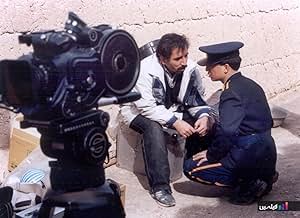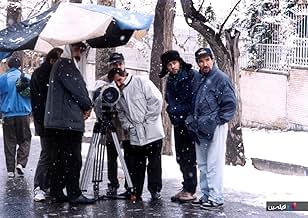The Iranian cinema is perhaps the most self-reflexive of all national cinemas. Though it owes much to the development of Italian neo-realism, the Iranian cinema today is not just an extension of its predecessor's concerns about cinematic truth but a formal inquiry of the nature of cinema and the "truth" that lies within and outside of art. Jacques Rivette's groundbreaking "L'amour fou" already sets the stage in 1968 when he investigated the symbiotic relationship betwen art and life by using two different film stocks, 16 and 35 mm., to represent "reality" as it unfolds in front and behind the camera respectively.
In Moshen Makhmalbaf's 1996 masterpiece "A Moment of Innocence" twenty years separates a key moment in time and the recreation of it. The incident occurred when Makhmalbaf was only a youth who participated in an anti-Shah demonstration which led to the stabbing of a policeman and his imprisonment for the next five years. In an attempt to recapture this moment Makhmalbaf decides to a make a film within a film casting all the original participants (including the policeman) to play themselves as mentors to their younger selves, (i.e., actors) guiding and instructing them in the making of this "fictional" documentary.
It is not surprising that non-professional actors are employed here to both maintain a semblance of reality and to keep cinematic distortion at bay. But paradoxically, the young non-professional actors chosen to play Makhmalbaf and the policeman of their youth are as similar as they are dissimilar from their counterparts, thus, setting the stage for exploring the many tensions that exist between past and present, art and life, cinema and reality. This type of casting not only blurs the line between fiction and reality but also the distinction between documentary and narrative filmmaking.
The preoccupation with the phenomenological aspects of the cinema is as much the focus of this work as is the dramatization of the event leading up to the pivotal moment, then and now, reconstructed as a memory film as well as a product of the filmmaker's imagination to help correct an incident that only becomes clear to everyone involved after twenty years have elapsed. This celebrated moment which occurs at the end of film effectively captures the past by placing it in the present context much as if past and present suddenly converge and share the same space and time, thereby allowing us to see loss and recovery unfold simultaneously. That lost moment is now regained twenty years later through art's ability to heal and transform Makhmalbaf and his crew--thus altering the "reality" of life. The final shot is both life-affirming and referential because it so eloquently evokes the cinema's first prominent use of the freeze frame in Truffaut's "400 Blows"--if only to remind us just how far the cinema has come along. Like Truffaut's autobiographical based character Antoine Doinel the cinema has indeed grown up.











